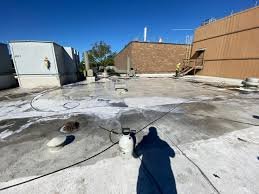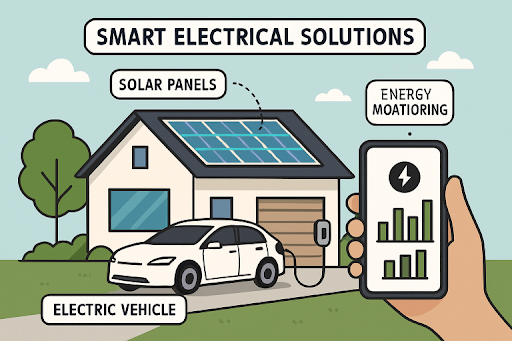Key Takeaways
- Discover practical strategies for preserving autonomy in assisted living.
- Learn how technology can boost independence.
- Understand the role of community and connectivity in enhancing quality of life.
Assisted living facilities support independence by providing personalized care while respecting residents’ autonomy. Seniors can manage their routines, participate in activities, and maintain social connections. Services like meal preparation, housekeeping, and transportation remove daily burdens, enabling residents to focus on hobbies and relationships. Encouraging choice and involvement fosters confidence and self-reliance, balancing necessary assistance and personal freedom. This approach promotes dignity, quality of life, and a sense of empowerment within a supportive community.
Understanding Assisted Living
Assisted living facilities, such as Kalamazoo assisted living facilities, are intended to help people who cannot live independently but do not need the high medical attention that nursing homes offer. These environments are specifically structured to provide just the right amount of help with daily activities, fostering an atmosphere that balances independence with necessary support. Residents can enjoy a sense of freedom within a community that understands and caters to their needs.
For many people, the idea of moving into an assisted living facility might conjure fears of losing autonomy. However, in reality, such facilities are dedicated to empowering residents by encouraging them to maintain their individuality and influence over their day-to-day lives. Residents can personalize their living spaces, select their schedules, and participate in social and recreational activities according to their preferences. By focusing on these aspects, assisted living facilities help dispel myths about losing independence and ensure the transition is as smooth and respectful as possible.
Strategies for Maintaining Independence
Freedom of choice is a cornerstone of independence, even within the structured setting of an assisted living community. Practical strategies that help residents maintain their autonomy include actively involving them in decisions about their daily routines and activities. These facilities promote a sense of ownership and satisfaction in their lives by allowing them the freedom to choose their meal plans, leisure activities, and personal schedules. These decisions increase self-esteem and have a significant positive impact on people’s general well-being.
The Role of Technology
Technological advancements have significantly enriched the lives of seniors in assisted living settings. Technology provides a safety net that supports autonomy, from wearable devices that monitor health parameters such as heart rate and oxygen levels to virtual assistants that remind residents to take medication or attend appointments. Moreover, these innovations enable residents to stay connected with loved ones, strengthening community and familial ties. The widespread use of tablets and smartphones allows residents to engage with social media, video calls, and interactive apps, bridging the gap between independence and necessary oversight. The best technologies for seniors highlight how these tools enhance the quality of life and ensure the safety of the residents without compromising their freedom.
Social Engagement and Community
Social connections are essential for mental and emotional health at any age. Assisted living facilities help residents build meaningful relationships by creating dynamic, interactive environments. This focus on community life is embodied through structured activities like group fitness classes, art workshops, and cultural events. Residents are encouraged to participate in clubs based on their interests, such as gardening, book reading, or traveling. These activities offer relaxation and enjoyment, stimulate mental acuity, and improve mood. By creating these support systems, locals may express themselves, exchange stories, and gain knowledge from one another, which enhances their quality of life.
Personalizing Care Plans
Every assisted care home resident has different needs and abilities. By crafting individualized care plans, facilities can provide the exact level of support each person requires, reinforcing their ability to live autonomously. Personalized care plans are not only about specific health needs but also encompass lifestyle preferences, cultural considerations, and personal goals. For instance, one resident may prefer yoga for relaxation, while another might enjoy painting. Caregivers are essential in carrying out these individualized plans because they prioritize respect and obedience to each resident’s preferences and daily schedule. This bespoke approach means that support is subtle and empowering rather than intrusive.
Nutrition and Independence
Nutrition is a critical component of maintaining independence in assisted living facilities. Offering varied and balanced meal plans tailored to individual dietary needs allows residents to control their health while enjoying meals that suit their preferences. Whether it’s accommodating special diets like vegetarian, gluten-free, or diabetes-friendly options, residents have a say in their nutrition, which can boost their physical health and morale. Furthermore, some facilities encourage participation in meal preparation or cooking classes, turning dining experiences into engaging activities that enhance life skills and autonomy.
Continuous Learning and Growth
Continuing education and personal development are vital for maintaining independence and cognitive health. Many assisted living facilities offer programs and workshops that challenge residents intellectually and creatively. Other options include taking technology classes that help close the generational digital divide or learning a new language, which improves cerebral function. These experiences cultivate new skills and foster a sense of community and belonging. Continuous engagement in learning activities has been linked to improved overall mental and health satisfaction and interest dive. Explore these lifelong learning opportunities that are available to enhance personal growth.
Future of Assisted Living
As the population ages, the future of assisted living is moving toward greater personalization and the integration of advanced technologies. Facilities are expected to evolve by incorporating smart home technologies, such as automated lighting and voice-controlled systems, designed to aid daily tasks without diminishing independence. Furthermore, a stronger emphasis on eco-friendly and sustainable living environments will also emerge, reflecting broader societal shifts. Trends like these will change the landscape of assisted living, ensuring that facilities meet the needs of the residents and anticipate and adapt to future requirements. This forward-thinking approach will continue to underscore the core mission of these communities: enhancing independence while providing essential support.




